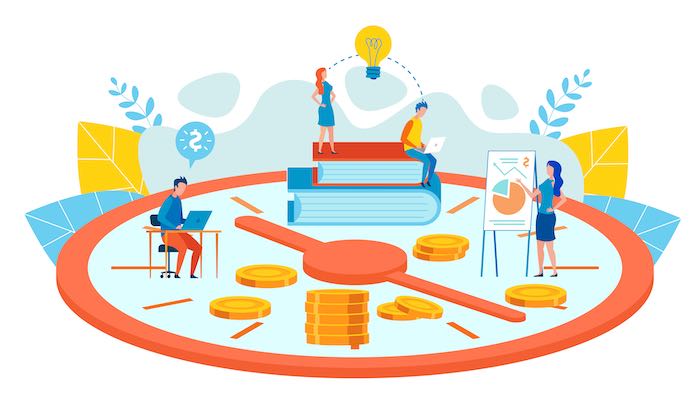Automated Flexibility To Scale Your Service Business
Scalability is a common factor to fast growing and profitable service businesses. It is not only about the ability to manage changes in volume. It...
4 min read
 Franz Reuchlein
:
May 28, 2015 6:16:00 PM
Franz Reuchlein
:
May 28, 2015 6:16:00 PM

The short answer is probably not. Cost, quality, speed and delivery describe the core tenets of lean thinking and value creation whether manufacturing products or designing and delivering services. Does your current support systems (information technologies, processes and organizational design) support, not only strategic forecasting, but day-to-day managerial decision-making?
Accounting systems should play a crucial role in not only cost reduction and improved profitability but also understanding cost allocation in relation to the most value-added business activities. Yet, most accounting systems have been shaped by financial reporting procedures and regulation.
Add to the mix the increased complexity of service offerings, changing customer demand and increased speed of innovation, and cost accounting processes and systems end up delivering less insights than ever before. Business intelligence solutions naturally help fill in the gap by enabling more than rudimentary analysis, but they are not operating systems.
We need to face the challenges of the coming economies:
With the emergence of cloud computing, the idea of services has expanded vastly with SaaS, PaaS, IaaS, and now XaaS, everything as a service. For many IT service providers, they believe their clients view as-a-service cloud offerings as providing lower costs, pay-as-you-go per transaction, limited or no capital investment and increased speed to solution.
What if we think even bigger with the term ‘everything’?
Think beyond just the IT relationship and into real life needs. Jeremy Rifkin, in his book The Zero Marginal Cost Society, describes a change in the younger generation’s relationship with the automobile as a shift from quintessential American ownership to access.
Zipcar, as well as other car share services, illustrate the opportunities for delivering services not devoid of product, as we often see professional services, but integrated with product. They also illustrate the possible, and to some scary, efficiencies.
An often quoted fact: for every shared Zipcar put on the road, 10 solely owned cars are taken off.
Some city planners are looking at MaaS, mobility as a service. In this scenario a combination of local public transport, long distance public transport, car sharing, a city bike system and car rentals can be used to get people from point A to point B and bill or charge appropriately.

Although services can be designed in advance, the manufacture and delivery of services happen simultaneously. Consequently accounting systems need to be aligned with service design and responsive to the speed of delivery. We have found several themes emerge as important to successful service business discovery.
Configuration of service bundles or component assembly can become quite complex when spanning end-to-end value streams with multiple systems, data, decisions, functional organizations and outsourced service providers. This means variations are possible in cost, price and transfer price depending on different users, customers, and suppliers. To enable accurate financial information, not spreadsheet cost models, requires a system dynamic enough to match the level of granularity of service component details.

Black box organizations tend to keep their knowledge internal and share only input and output information, thus the black box analogy. ERP systems took the first step in breaking down information barriers revealing and connection information beyond inputs and outputs, but also internal data such as inventory levels and associated financials. The age of the internet brought transparency to the table. The term internet itself implies a large or worldwide network.
Accounting systems need not only the details or granularity of financial information, but the connection of those sources into a system that can be enriched (by bringing other relevant external information into the mix), analyzed, managed, planned and controlled, and ultimately monetized.
We live in a world awash with infographics because the power of representing information in a visual format allows easy and fast mental digestion of sometimes complex information. As information becomes more complex, detailed, and more dynamic we need new methods to be able to learn and make decisions quickly. Fast and visual consumption of information is not really that new.
Think about the stock market ticker tape which came into use around 1870.
It contained abbreviated company names, transaction price and volume information. When it became digital, with the green up arrows and the red downs, watching the flow of purchase and sales was an obsession of traders and stock investors around the world. We do visualization for our customers in profit and loss analysis and think this is a growing field in operating systems and accounting.
The difference in customer relationships is described by Zuora as the subscription economy. Zuora, and any alternative to Zuora, recommend a thought shift from one-time revenue to recurring revenue management with financial and marketing metrics to match. Although there can be chaotic shifts in revenue if customer needs and demands shift, there are also better methods in the connected world to measure customer engagement.
Some challenges in measuring customer value emerge as service enterprises scale laterally through, as an example, strategic relationships. Uber, Expensify and Delta partnerships represent a combined service chain to ease the hassle of business travel. What does the future hold for managing profitability, customer engagement and business performance in cross-enterprise service chains?
5 Accounting system characteristics for your search:
Summing up - ready?
So is your accounting system ready for the transformation? Consider that for a moment, be critical. Most accounting systems have been shaped by financial reporting procedures and regulation and it's high time we moved beyond yesterday's basics and met the opportunities and challenges laid out before us.
Are you dedicated to the future of telecom expense management? Please join me for a free webinar that outlines the key 5 issues that telecom companies need to tackle to succeed in the Internet of Things.

Scalability is a common factor to fast growing and profitable service businesses. It is not only about the ability to manage changes in volume. It...

In the service business industry, customer service can play a critical role in retention and expansion of customer base. Furthermore, many customers...

Do you think it takes too long to launch new services? A manufacturing company was actively seeking growth through new digital services. Digital...